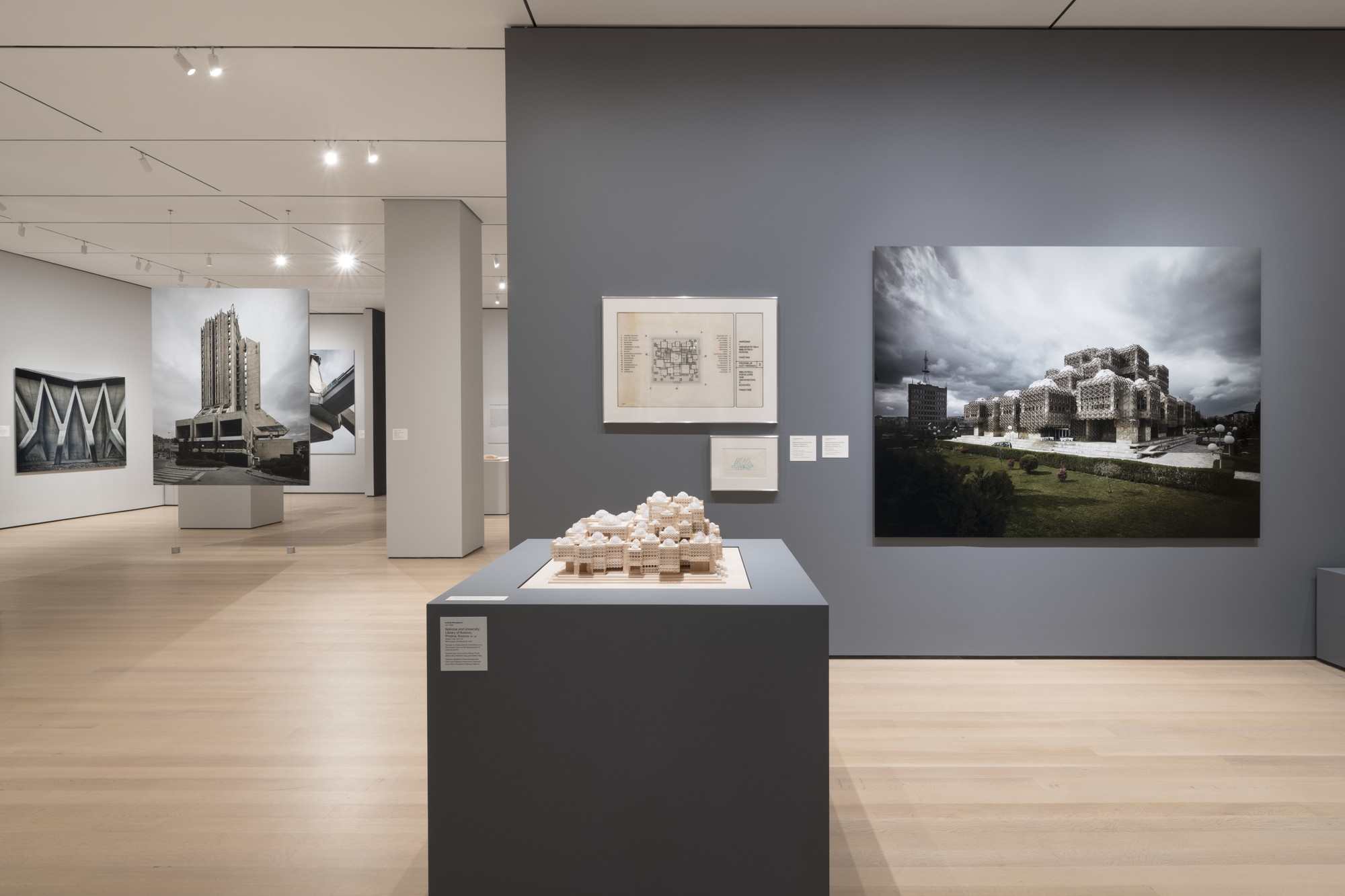National Library of Kosovo
MoMA | Toward a Concrete Utopia: Architecture in Yugoslavia, 1948–1980
– Associate Dean Elizabeth O’Donnell
Toward a Concrete Utopia: Architecture in Yugoslavia, 1948-1980, examines the unique range of forms and modes of production in Yugoslav architecture and its distinct yet multifaceted character. Apart from the exploration of themes of large-scale urbanization, technology in everyday life, consumerism, monuments and memorialization, and the global reach of post-was modernist Yugoslav architecture, the exhibition also shed light on the architects who aimed to create a unique architectural identity for Yugoslavia, distinct from the influences of the United States and the Soviet Union.
The exhibition featured five highly detailed, exquisitely executed architectural models which were conceived and fabricated by a selected number of students of the Cooper Union, Irwin S. Chanin School of Architecture with the show’s curator request Martino Stierli, and the guidance of professors Matthew Worsnick and Anna Bokov among other faculty. The challenge was to design and fabricate models that could help reveal the structure form and tectonics of the actual buildings.
Our analytical and conceptual process revealed to us several remarkable aspects about the National Library of Kosovo, which are reflected directly in our material and tectonic choices for the construction of the model. Firstly, its astounding architectural elements, characterized by multiple modular volumes of concrete structures spanning over 50×50 meters, each of which are capped with almost 100 translucent domes of different sizes, and clad with 70,000 individually cast aluminum pieces, all aligning with each other as a result of precise workmanship. Secondly, this building holds cultural significance as it references Byzantine architecture present in this Balkans area, while it transforms its elements – cube and dome – into a modernised architectural form embodied in Kosovo’s culture. Lastly, the building bears huge political relevance as it held a collection of Albanian literature destroyed during the war of ’99. The choice of time-enduring materials such as poured concrete, locally dug hard stone, thick aluminum cast pieces and plexiglass sourced from the same supplier that built WWII fighter jet canopies, made for a safeguarded library that protects national treasure during times of political unrest. – Patrisa Pruthi
With the critical selection of the National Library of Kosovo, the students attempted to not only honor the original architects’ visions but also spark renewed interest for this building. Notably, the restoration of the Kosovo Library is now being planned, thanks in part to the attention garnered by this exhibition in MoMA.
The National Library of Kosovo was one of the five models showcased in the MoMA exhibition and was selected, conceptualised and fabricated by the Cooper Union students: Patrisa Pruthi, Cyrus Henry and Zhenni Zhu.





